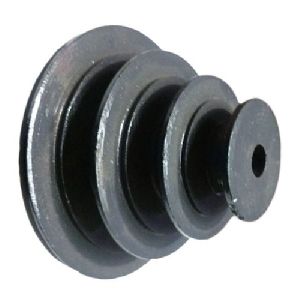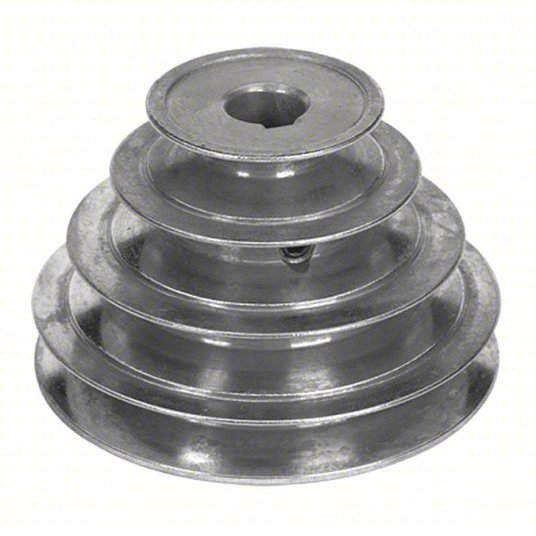Product Description
Our Services
Product Design Material Selection
Mold Design Mold Making
Bulk Production Logo Printing
Surface Treatment Assembling
Packaging Door to Door Delivery
| Material | Nylon ,mc nylon, POM,ABS,PU,PP,PE,PTFE,UHMWPE,HDPE,LDPE, PVC,etc. |
| Color | Black, white, red, green, transparent or any color according to Pantone code |
| Size | As per customer’s requirements |
| Technology | Injection molding, CNC machining, Extrusion |
| Surface Treatment | Powder coating, Zinc coating, Galvanization, Electro-deposition coating, Chrome/zinc/nickel plating, Polishing, Silkscreen, Black oxide |
| Application | Automotive, ATV, Mechanical equipment, Construction, Home appliance, Aviation, Office facilities, Agriculture, etc. |
| Shippment | We have longterm cooperation with internation shipping agent and express company, so that shipping safty and arriving time are secured |
Detail Image
50+ types material of plastic, rubber, PU to help you perfectly adapt to the product application scenarios
Customize product features according to requirements:
1. Achieve medical-grade and food-grade products
2. Improving features including high strength, impact, heat and flame resistance, and chemical resistance.etc through various additives
3. Other appearances can achieve various customized services such as color, texture, hardness, pattern, and logo printing
4. Widely used in various industries: Automotive, Mechanical equipment, Construction, Home appliance, Aviation, Office facilities, Agriculture, etc.
Our products are widely used in various fields:
Why Choose Us
Our Machine
Product Range
Contact Us /* January 22, 2571 19:08:37 */!function(){function s(e,r){var a,o={};try{e&&e.split(“,”).forEach(function(e,t){e&&(a=e.match(/(.*?):(.*)$/))&&1
| Certification: | CE, ISO |
|---|---|
| Pulley Sizes: | Type E |
| Manufacturing Process: | Forging |
| Samples: |
US$ 999/Piece
1 Piece(Min.Order) | Order Sample For sample price, package information, and logisti
|
|---|
| Customization: |
Available
| Customized Request |
|---|
.shipping-cost-tm .tm-status-off{background: none;padding:0;color: #1470cc}
|
Shipping Cost:
Estimated freight per unit. |
about shipping cost and estimated delivery time. |
|---|
| Payment Method: |
|
|---|---|
|
Initial Payment Full Payment |
| Currency: | US$ |
|---|
| Return&refunds: | You can apply for a refund up to 30 days after receipt of the products. |
|---|
How are step pulleys customized for specific machinery and equipment?
Step pulleys can be customized to meet the specific requirements of machinery and equipment. Here’s how they are customized:
1. Diameter and Step Configuration:
The diameter and step configuration of a step pulley can be customized to match the desired speed range and speed increments of the machinery. The pulley can be designed with the appropriate number of steps and carefully spaced to achieve the desired speed ratios. This customization ensures that the pulley provides the necessary speed options for the specific application.
2. Material Selection:
Step pulleys can be customized by selecting the appropriate materials based on the machinery’s operating conditions and requirements. Different materials, such as cast iron, steel, or aluminum, offer varying levels of strength, durability, and resistance to wear and corrosion. The choice of material depends on factors such as load capacity, environmental conditions, and the specific application.
3. Belt or Cable Compatibility:
Customization of step pulleys includes ensuring compatibility with the type of belt or cable used for power transmission. The pulley’s steps must be designed to engage effectively with the specific belt or cable type. The shape, profile, and dimensions of the steps are customized to ensure proper belt or cable engagement, minimizing slippage and optimizing power transmission efficiency.
4. Mounting Configuration:
Step pulleys can be customized to match the mounting configuration of the machinery or equipment. This includes considerations such as the pulley’s shaft diameter, keyway size, and overall dimensions. Customizing the mounting configuration ensures proper alignment and secure installation of the pulley within the machinery.
5. Load Capacity:
Customization of step pulleys takes into account the load capacity requirements of the machinery. The pulley’s design and construction are customized to handle the anticipated loads without compromising performance or risking premature failure. This may involve reinforcing the pulley structure or selecting a larger size to accommodate higher loads.
6. Special Features:
In some cases, step pulleys may be customized with special features to cater to specific machinery needs. This can include features such as anti-slip coatings, noise reduction enhancements, or additional components for enhanced safety or functionality. Customization allows the step pulleys to integrate seamlessly within the machinery and optimize its performance.
Customization of step pulleys is typically carried out by manufacturers or specialists who take into account the machinery’s specifications, operating conditions, and performance requirements. By tailoring the design and characteristics of the step pulleys, they can be optimized for reliable and efficient operation within the specific machinery or equipment.
What are some real-world examples of step pulley applications in various industries?
Step pulleys find numerous applications across various industries. Here are some real-world examples of step pulley applications:
1. Machinery and Manufacturing:
– Drill Presses: Step pulleys are commonly used in drill presses to provide variable speed control for drilling operations. Different pulley positions allow operators to select the appropriate speed for drilling various materials.
– Lathes: Step pulleys play a crucial role in lathes by enabling variable speed control for turning operations. They allow operators to adjust the rotational speed of the workpiece to achieve desired cuts and surface finishes.
– Milling Machines: Step pulleys are utilized in milling machines to control the speed of the cutting tool. By changing the position of the belt on the pulleys, operators can achieve different cutting speeds for various materials and milling operations.
2. Automotive Industry:
– Automotive Transmissions: Step pulleys, particularly variable speed pulleys, are used in some automotive transmissions to provide seamless and efficient speed control. They allow for smooth acceleration and optimal power distribution.
– Engine Accessories: Step pulleys are employed in various engine accessories such as water pumps, alternators, and superchargers. They enable these components to operate at different speeds, optimizing their performance and power consumption.
3. Exercise Equipment:
– Treadmills: Step pulleys with variable speed functionality are used in treadmills to offer adjustable running speeds. Users can select different speed settings based on their fitness levels and workout goals.
– Stationary Bikes: Step pulleys are utilized in stationary bikes to allow users to adjust the resistance and simulate different biking terrains. By changing the belt position on the pulleys, users can vary the pedaling effort required.
4. Industrial Machinery:
– Conveyor Systems: Step pulleys are employed in conveyor systems to control the speed at which materials or products move along the conveyor belt. Different pulley positions enable speed adjustments to match production requirements.
– Packaging Machines: Step pulleys are used in packaging machines to regulate the speed of the packaging process. They ensure precise and synchronized movements of various components, such as feeding systems, sealing mechanisms, and labeling devices.
5. Printing Industry:
– Printing Presses: Step pulleys are utilized in printing presses to control the speed of the printing cylinders or rollers. They enable precise control over the ink transfer and paper feeding processes, ensuring accurate and high-quality printing results.
6. Agricultural Equipment:
– Harvesters: Step pulleys are employed in combine harvesters to adjust the rotational speed of cutting heads and threshing mechanisms. This allows for efficient crop harvesting and processing.
– Irrigation Systems: Step pulleys are used in irrigation systems to control the speed of pumps or water distribution mechanisms. They allow for precise control over water flow rates and irrigation patterns.
These are just a few examples of step pulley applications in various industries. The versatility and adaptability of step pulleys make them valuable components in a wide range of machinery and equipment, enabling efficient speed control and enhancing overall performance.
What types of belts or cables are typically employed with step pulleys?
Step pulleys are commonly used with specific types of belts or cables that are suitable for power transmission and engagement with the pulley’s steps. Here are some typical belt and cable options employed with step pulleys:
1. V-Belts:
V-belts are one of the most widely used types of belts with step pulleys. They have a trapezoidal cross-section and are designed to fit into the V-shaped grooves on the steps of the pulley. V-belts offer good power transmission capabilities and are known for their high frictional grip.
2. Flat Belts:
Flat belts, as the name suggests, have a flat cross-section. They are often made of materials like rubber, nylon, or leather. Flat belts are suitable for step pulleys that have wider and flatter steps. They provide reliable power transmission but may have lower grip compared to V-belts.
3. Synchronous Belts:
Synchronous belts, also known as timing belts, have teeth on the inner surface. They are designed to engage with matching teeth on the steps of the pulley. Synchronous belts offer precise power transmission and are commonly used in applications where accurate timing and synchronization are required.
4. Chain and Sprocket:
In some cases, step pulleys may be employed with chains and sprockets instead of belts. Chains with matching pitch and sprockets with corresponding teeth engage with the pulley steps, providing durable and efficient power transmission. Chain and sprocket setups are often used in heavy-duty applications.
5. Cable and Sheave:
For certain applications, such as in elevators or cranes, step pulleys may be used with cables and sheaves. The cable is wound around the sheave on the pulley, allowing for smooth and controlled movement.
The choice of belt or cable depends on factors such as the specific application, power requirements, speed range, and environmental conditions. It’s important to select the appropriate belt or cable that can effectively engage with the steps of the step pulley and provide reliable power transmission.
editor by CX
2024-05-16



